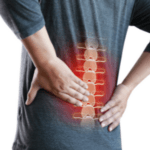The Rail Accident Investigation Branch (RAIB) has issued an update on its investigation into the Croydon tram crash, which happened in 2016.

A tram heading for Sandilands station
The RAIB say their investigation into the fatal accident that occurred near Sandilands Junction on the London Tramlink system is continuing.
Background
At around 06:10 hrs on Wednesday 9 November 2016, a tram overturned on a bend. Seven people suffered fatal injuries in the accident. A further 51 people were taken to hospital.
Further details of the accident and the ongoing investigation were included in two interim reports, published on 16 November 2016 and 20 February 2017.
While the basic explanation of events that day remains as described in the second interim report, the RAIB have gathered and analysed considerably more evidence since it was published in February. This has led to the preparation of several draft recommendations.
Action
In recent weeks, the draft safety recommendations, and RAIB’s justifications for making them, have been discussed with the families of those who died in the accident, with the organisations involved and with the safety authority (Office of Rail and Road).
RAIB has also written to Transport for London which owns the tramway, Tram Operations Limited which operates the tramway and UKTram, which is the trade organisation covering all UK tram operators, to formally confirm the areas that a number of the key recommendations are expected to cover.
The aim of this was to enable them to consider what action to take in response, prior to the publication of the final report. The letter has been copied to other UK tram operators and the safety authority.
According to the RAIB, key recommendation areas addressed to UK tram operators are likely to be:
- provision of active tram protection to prevent serious accidents due to excessive speed at high risk locations
- research into active means of detecting the attention state of drivers and intervening in the event of inattention
- improved containment of passengers by tram windows and doors
- setting up of an industry body to facilitate more effective cooperation between UK tramway owners and operators on matters related to safety performance and the development of common standards
In addition, the RAIB’s investigation into how Tram Operations Ltd manage fatigue risk may result in a recommendation.
Underlying safety management
The final report will also highlight the importance of ensuring the availability of in-tram CCTV systems and any actions already taken to address the issue. If necessary, the RAIB will also make a recommendation for further improvement in this area.
The RAIB stress that this list is not exhaustive, but includes some of the important safety issues that are likely to take time to implement, making early consideration vital.
Other areas within the scope of the investigation, such as consideration of underlying safety management and regulatory factors, may also give rise to recommendations. The RAIB highlight that some tramway organisations have already started work in a number of these areas.
The final report is now being written, and once completed, will be subject to formal, written consultation with those involved, prior to publication. The RAIB say that publication is scheduled to be within the year from the date of the accident. However, the publication date remains subject to a number of factors, some of which are outside of the RAIB’s direct control.
Approaches to managing the risks associated Musculoskeletal disorders
In this episode of the Safety & Health Podcast, we hear from Matt Birtles, Principal Ergonomics Consultant at HSE’s Science and Research Centre, about the different approaches to managing the risks associated with Musculoskeletal disorders.
Matt, an ergonomics and human factors expert, shares his thoughts on why MSDs are important, the various prevalent rates across the UK, what you can do within your own organisation and the Risk Management process surrounding MSD’s.


